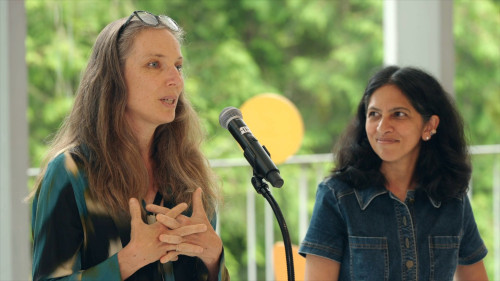A common theme in my research as a computer scientist is a search for ways to expand the digital capabilities of artists and, more broadly, everyone making art. I organize the “Art of Science” exhibition to spur conversation among artists about the nature of art, open scientists to new ways of “seeing” their research, and offer a lens through which the general public can engage with two fields that for different reasons can feel inaccessible to the non-expert.
Adam Finkelstein is a computer scientist creating new tools to help artists express themselves in digital mediums. With his team of collaborators, Adam has developed digital tools to enhance 2D and 3D animation, and digital painting techniques that simulate effects found in traditional media. He has also investigated how people make and perceive line drawings—and how computers can mimic their hand-drawn qualities.
He has also developed various digital photography technologies, including methods to fill in missing areas of a photo, adapt its color palette, and automatically select desired images in a collection. A recent focus of his research has addressed ways to improve recordings of human speech, such as cleaning up a podcast’s audio quality and studying the characteristics of an individual voice that make it recognizable to others.
Adam has received a number of awards, including the National Science Foundation’s CAREER Award and the Alfred P. Sloan Foundation’s Sloan Research Fellowship. He is also a Fellow of the Association for Computing Machinery.
The Phillip Y. Goldman ’86 Professor in the Department of Computer Science, Adam has taught at Princeton University since 1997. He co-founded Princeton’s “Art of Science” exhibition, which explores the interplay between science and art. Adam is also a co-founder and regular instructor of the course “Transformations in Engineering and the Arts,” exploring transformations within and between visuals, sound, structure, and movement as art and engineering forms.
